The electric guitar, as an instrument, has come a long way. No matter the genre and no matter whether you’re playing rhythm or lead guitar, things have changed a lot since the old days of the instrument. Sure, the guitar itself relies on the same principles, but there have been so many advancements, especially in the terms of effects.
And the most important effect of all, the distortion, has seen a lot of changes. Of course, the biggest lovers of distortion are, without a doubt, metal musicians. Without this effect, the genre just wouldn’t work.
However, in order to have a good metal sound, you need a very specific kind of distortion. It needs to do a lot of clipping while keeping things tight and without any unwanted and excessive fuzz. Since the 1980s, manufacturers began focusing on making metal-oriented distortion pedals. Although those first examples didn’t really catch on, like Boss’ HM-3 Heavy Metal, they served as a basis for new generations of metal distortion pedals.
And every metal guitarist knows that it’s not that easy to get a good tone. With this in mind, we thought about looking more into the matter and have brought you a list of the best distortion pedals for metal that you can find on the market these days.
[amazon box=”B00A2WJDJK,B00R73QG24,B07X2ZZP7B,B07X2ZZP7B,B0065KQ1I4,B000MWWT6E,B07984M9YR,B002US76HK,B06XDGNNCK,B07KB3YQLF,B01N51Z6BV ” template=”table”]
Bogner Ecstasy Red
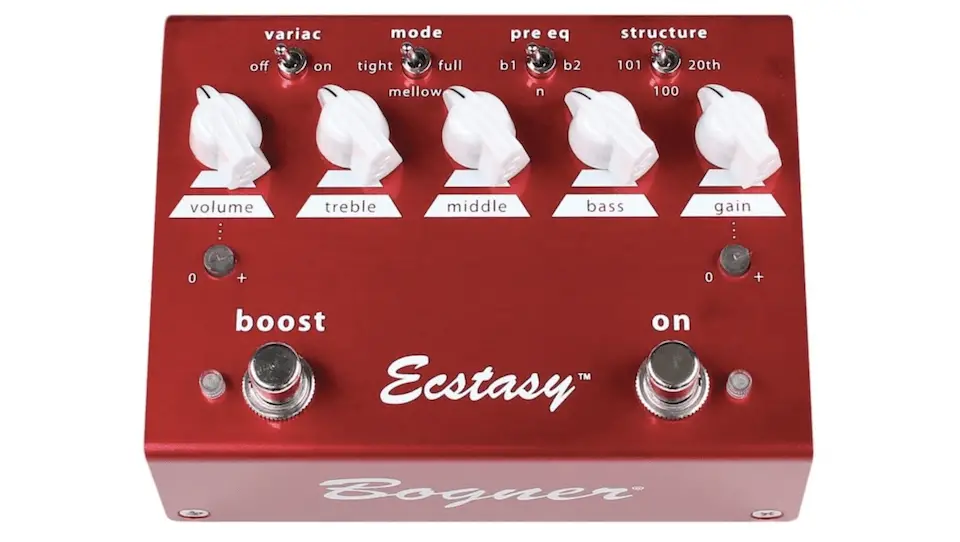
The legendary amp manufacturer Bogner also puts the essence of their tone into compact pedals. One of the finest examples when it comes to metal distortion is the company’s Ecstasy Red model. And it kicks off our distortion pedals for metal rundown!
Now, this one operates as a two-stage device. It comes with a standard on and off switch, along with an additional boost toggle. What’s more, the boost feature comes with individual volume and gain controls, allowing you to change the tone for lead sections, or any part where you need to get louder and heavier.
But this pedal is more than just a simple distortion device. Aside from a standard 3-band EQ, it’s packed with four different tone-shaping switches. A pretty interesting one is the “variac” control which mimics the dropped voltage in the style of Eddie Van Halen’s tone.
Then there’s a mode switch with three main voicings – tight, mellow, and full. This one changes the overall EQ curves and changes how the EQ knobs respond. The “pre-EQ” switch adds more “openness” to the tone, and we also have a so-called “structure” control that gives you three different gain structure modes of Bogner’s famous amplifiers.
This is a pro-level pedal that provides players with many tone-shaping options. But aside from versatility, it’s one of the perfect choices for hard rock and classic heavy metal players. Depending on the amp and other gear that you use, it can even come in handy for some even heavier tones as well.
Catalinbread Sabbra Cadabra
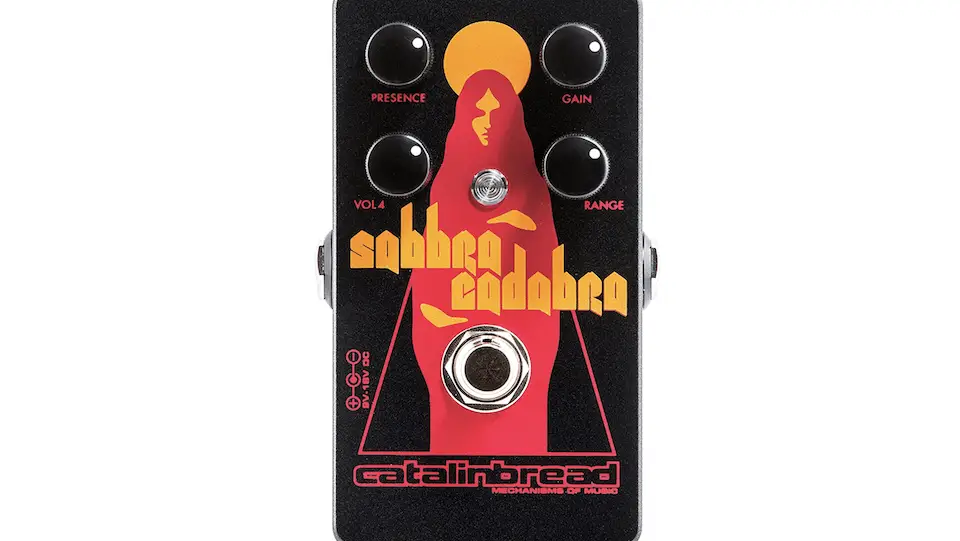
There’s hardly any device that would help you sound like Black Sabbath’s Tony Iommi. Pretty much the “inventor” of heavy metal music, Iommi used some pretty rare stuff in order to get his tone, making it really hard to replicate the early Sabbath tones.
However, a pedal like Catalinbread’s Sabbra Cadabra lets you get pretty close. Bearing the name of one of the band’s songs, as well as aesthetics inspired by the artwork of their debut album, the pedal comes with simple controls and a compact casing.
Back in the earliest days of Black Sabbath, Tony Iommi used those old school Laney amps paired up with a specially edited Dallas Arbiter Rangemaster treble booster. This particular combo created a really unique tone that was almost impossible to imitate.
Well, this pedal manages to pull this off with circuitry that has a preamp copying Laney amps and an additional booster that copies the Rangemaster. Aside from “Volume 4” (purposefully named after Sabbath’s 4th record) and gain controls, we have a presence parameter that boosts higher mids and a “range” control that adds that unique type of boost.
The resulting tone is a bit fuzzy yet really tight, making it perfect for old school metal and stoner rock. One of the distortion pedals for metal, for sure.
Diezel VH4 Pedal
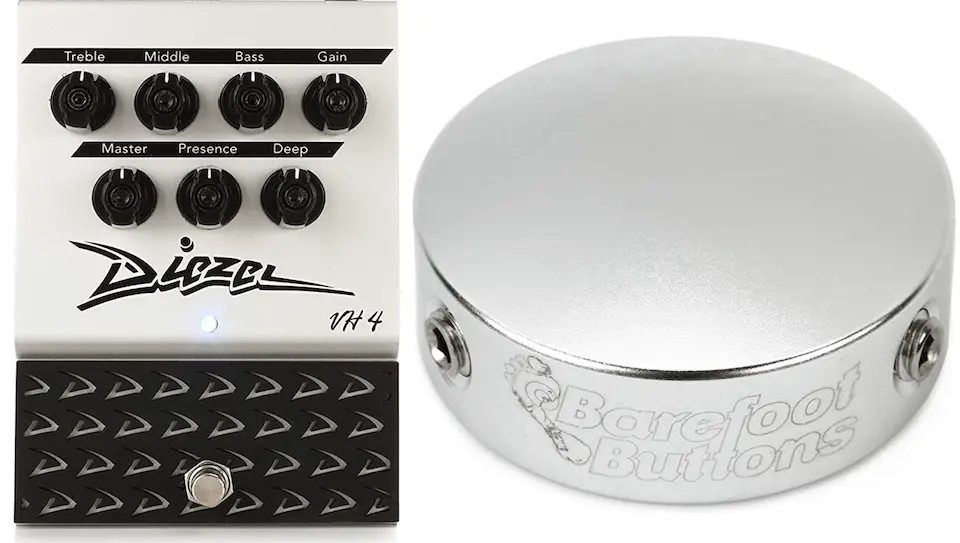
Diezel has to be one of the most underrated amp brands of all time, and that includes their distortion pedals for metal. In their vast arsenal, a piece like the VH4 amplifier really stands out. But in case you want to get really close to its classic tone without having to purchase an entirely new amp, the VH4 pedal comes in handy.
This is essentially a preamp and a regular pedal in one compact package. You can either bypass your amp’s preamp section by going straight to the power amp through the “return” jack of the effects loop, or you can simply plug it in a regular way using its other output. Another great solution that some players might prefer is to go straight to a PA.
The pedal is equipped with some pretty useful tone-shaping controls. On the front panel, we have a 3-band EQ along with the master volume and gain knobs.
However, there’s also a presence knob that helps you shape those higher mids, as well as the “deep” control which fine-tunes the pedal’s bottom-ends. The VH4 pedal manages to bring some razor-sharp yet bottom-heavy tones. With these characteristics, the pedal comes as a perfect choice for almost any subgenre of metal music.
BOSS MT-2W Waza Craft Metal Zone
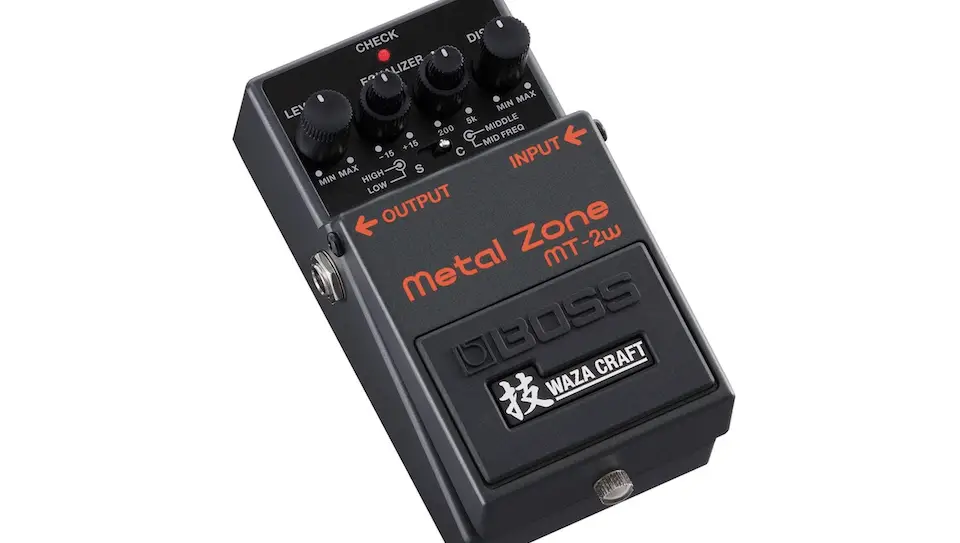
For many years now, metal-loving guitar players have been using the legendary Metal Zone, the MT-2 model by Boss. Although there are many different opinions about it, one thing’s certain – this guy made history when it comes to distortion pedals for metal.
Metal Zone can be found in signal chains of beginners and up to professionals, making it one of the company’s best-selling devices. However, in more recent years, Boss took things to a whole new level with the introduction of Metal Zone MT-2W or the Waza Craft Metal Zone.
Just like the other reworked or revamped pedals in this Waza Craft series, the MT-2W brings a different twist to its original circuitry. Sure, the basic controls are pretty much the same. We volume and gain followed by a 3-band EQ that features a parametric mid control.
However, there’s also an additional switch that toggles between the classic tone and a completely new mode. The so-called “custom” mode brings tighter bottom-ends, higher gain, and less compression. Basically, it “opens up” the tone and brings more versatility to your tone-shaping options.
In case you’re feeling experimental, you can also plug in the MT-2W pedal into your amp’s “return” input of the effects loop. This way, you’re bypassing the preamp circuitry and are bringing a tighter and more professional-sounding tone to the equation. This pedal is definitely capable of more things than people might think.
Boss DS-2 Turbo Distortion
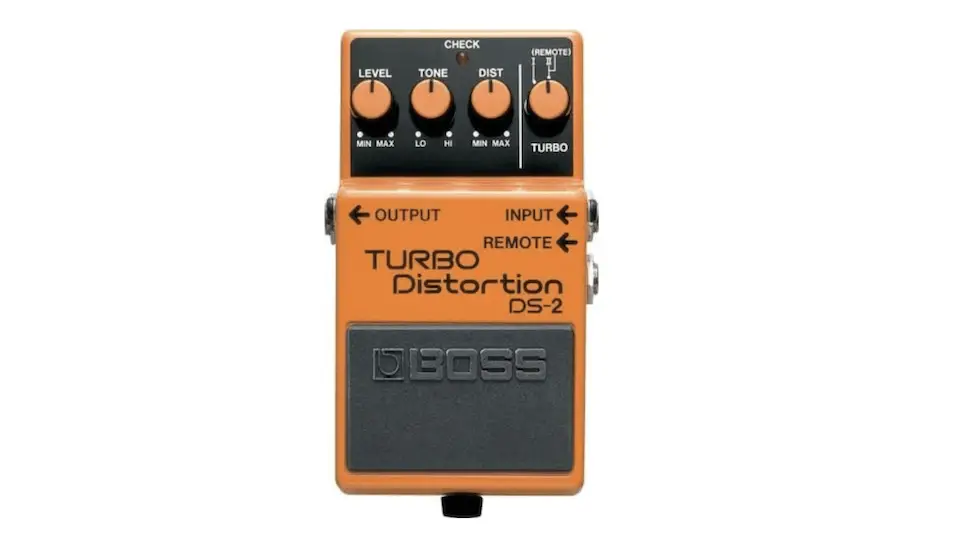
Of course, it’s impossible not to mention at least one more Boss pedal when talking about distortion pedals for metal. Now, almost every electric guitar player is aware of the classic DS-1 Distortion. Its simplicity and great tone have been admired by guitar players of almost all genres.
However, Boss took this classic circuitry into new territories with the introduction of the DS-2 model. Also dubbed as the Turbo Distortion, it comes with an additional switch for two modes, along with the three basic controls for volume, tone, and gain.
The first mode is pretty similar to the classic DS-1 pedal, although it’s a bit “flatter” with its distribution of frequencies. The second mode of operation, however, brings a noticeable boost not only to the amount of distortion but also to the mids. In case you want to have more functionality to it, you can pair it up with an external footswitch through the pedal’s designated jack and switch between these two modes through it.
Although a fairly simple pedal, DS-2 Turbo Distortion is fairly flexible, making it useful for a lot of metal subgenres. The addition of a mid-boosted mode helps you add a new dimension to your performance, especially if you want to cut through the mix during lead sections.
Electro-Harmonix Metal Muff
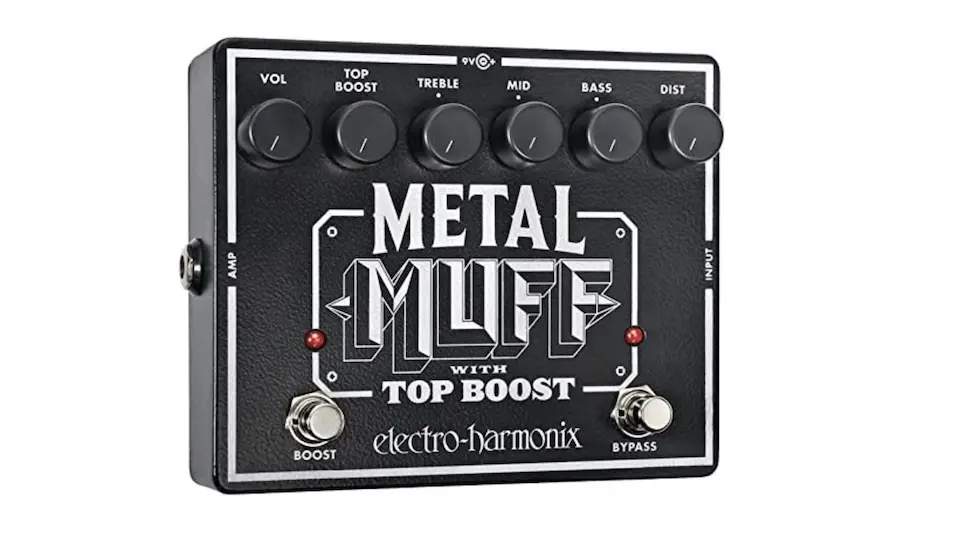
If it wasn’t for Electro-Harmonix, the world of guitar-oriented music just wouldn’t be the same. Their legendary Big Muff Pi and its numerous variants changed the landscape of rock and other related genres with their “sizzling” and heavy tones over the decades.
But in case you need something that’s focused on metal music, then you should definitely check out their Metal Muff, one of the top distortion pedals for metal on the market right now.
This is yet another one of those “two-stage” distortion pedals. It comes with two footswitches, one of which turns it on and off, while the other brings an additional treble boost.
Aside from expected basic controls for volume and gain, we have a 3-band EQ as well as the individual control for this boost. When you engage it, you get more of those high-ends that pierce through the mix, which is mostly useful for lead sections.
Metal Muff does come with a bit of that classic fuzz in the tone due to its more aggressive clipping. However, the tone manages to stay pretty tight. Such a combo can come in handy for some old school metal stuff, as well as stoner and doom metal. But you can still find a lot of use for it in other subgenres as well.
Fender Pugilist
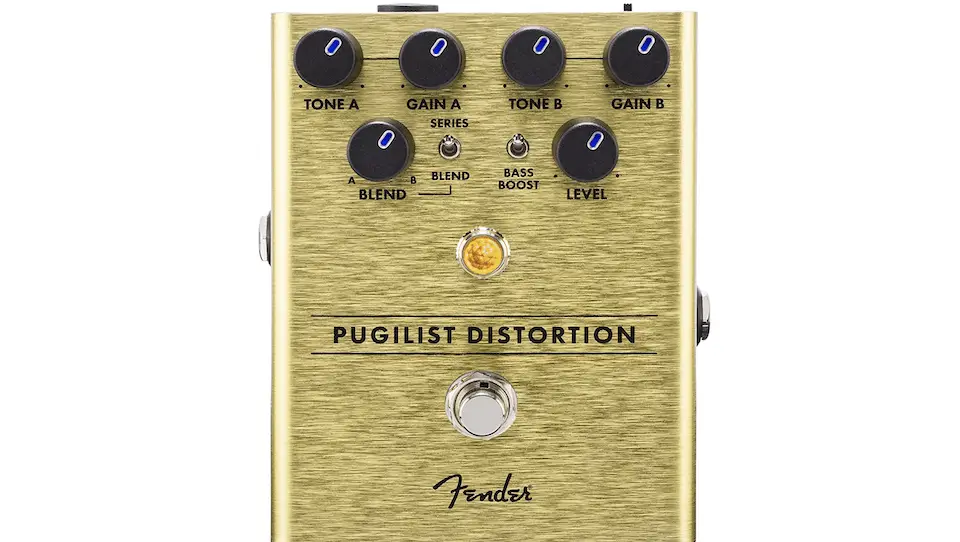
While we remember Fender for their great guitars and amps, sometimes their great pickups, the legendary company also has a lot of top goods to offer, including some distortion pedals for metal. In fact, there’s even some stuff for metal lovers in the guitar world. For this purpose, we’re bringing Fender’s Pugilist distortion pedal.
Now, this pedal sounds as heavy as it looks with its rugged and durable metal construction. But what’s really special about this pedal is its unique circuitry that allows you to stack different distortion types in one single device. This not only offers more possibilities, but also the creation of some very unique tones.
The pedal’s two gain stages have individual controls for tone (treble roll-off) and gain. Additionally, there’s a blend knob and a master level knob. In case you want to disengage the blend knob and run these two stages in series, then there’s an additional switch for that as well. And if things sound too “thin” or just weak for your tastes, you can engage the simple bass boost switch.
With so many options, this pedal becomes a real distortion workstation. Although mostly focusing on heavy tones, Fender’s Pugilist is a very potent pedal that can even cover plenty of other genres. It’s one of the most diverse distortion pedals on the market these days.
MXR M116 Fullbore Metal
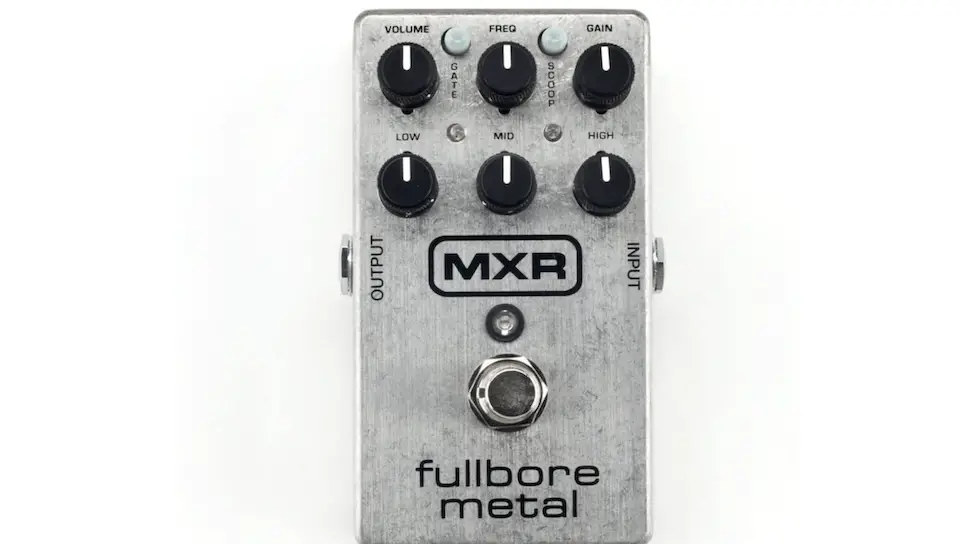
MXR is one of the most important brands in the world of guitar pedals. In case you’re looking for a metal-friendly distortion, there’s an appropriately-named one – the Fullbore Metal or the M116 model. This one is intended to be a fairly compact yet versatile pedal with a fair deal of options.
Aside from volume and gain, this pedal comes with a 3-band EQ. However, things are made more interesting with one additional control knob for the peak mid-frequency.
This is exactly what can help you bring diversity to your tone-shaping process. This allows anything from darker to more “open” tones, all while keeping things pretty heavy.
But what’s also really interesting is that it comes with two additional switches. The first one is the “scoop” switch that lets you boost bottom-end and high-end, resulting in that old school rhythm metal tone.
The second button is the noise gate. There’s also an additional control inside of the pedal that lets you select the noise gate’s threshold. It’s a fairly practical, versatile, and yet compact distortion pedal. One of the good distortion pedals for metal for sure, maybe the best.
Wampler Dracarys
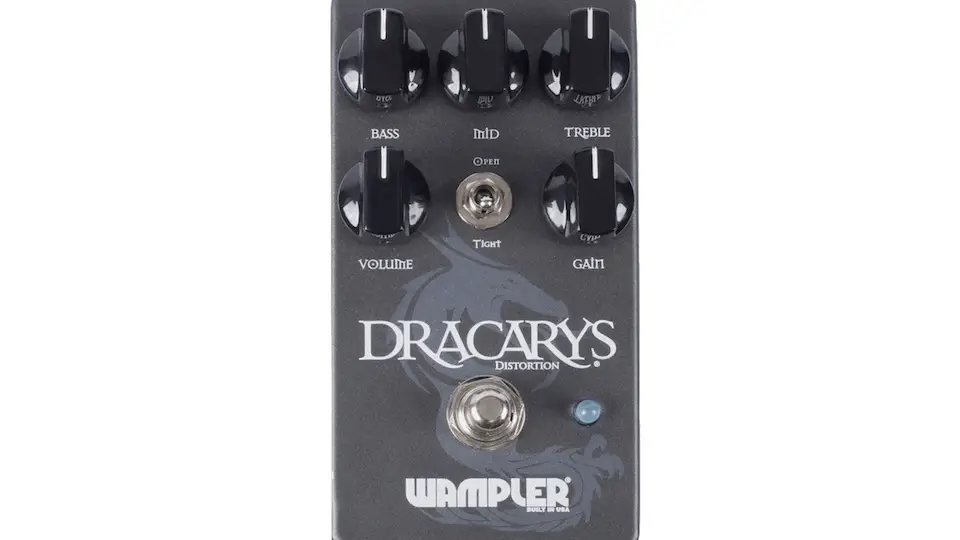
In case you’re really into the “boutique” quality of pedals, then Wampler is one of the brands to look into. If you want some really heavy tones for metal music, they have a very potent one called Dracarys, the company’s representative in the distortion pedals for metal domain.
This compact and dark-colored device is basically all that you need for shaping the perfect distorted tone as a hard rock or metal player.
On it, you’ll find the basic controls for volume and tone, as well as a regular 3-band EQ. But things are made more interesting with a switch that lets you choose between “open” and “tight” tones.
The “open” mode works with way less compression, making the tone a bit more dynamically responsive. The “tight” position adds more compression and is perfect for that classic thick-sounding heavy riffing. Although this is a regular distortion pedal circuitry, Wampler made it sound really close to what tube amps are capable of.
Friedman Amplification BE-OD Deluxe
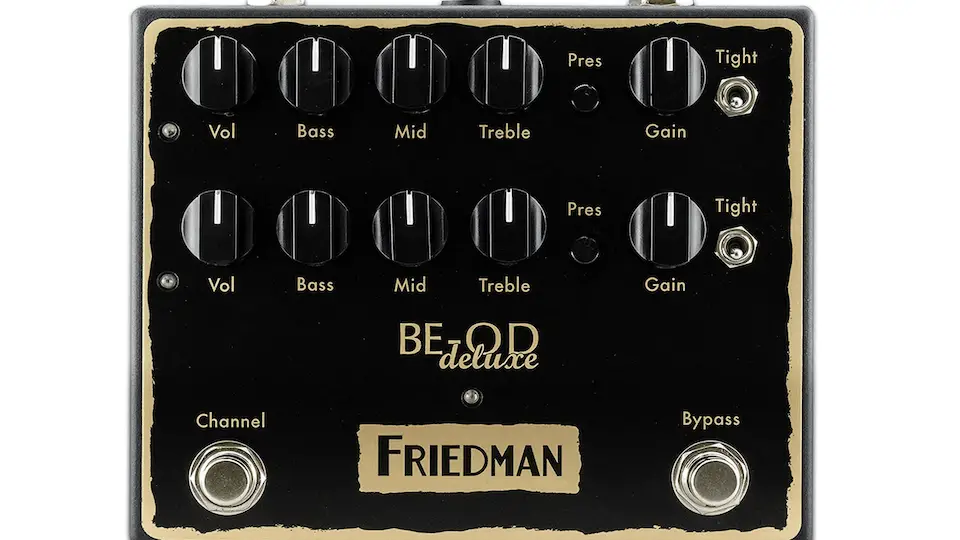
Although there are plenty of distortion pedals for metal on the market, we’re not certain whether anything can even come close to what Friedman is capable of doing.
The legendary guitar amp manufacturer also entered this game and proved that they’re the ultimate rulers with their BE-OD Deluxe pedal. This is a high-end device with some very diverse tone-shaping options.
One thing that’s really exciting about the pedal is that it’s a two-stage device. There’s an additional footswitch that lets you toggle between two identical channels. However, with a great deal of tone-shaping options, you can create two completely different types of tones and toggle between them for rhythm and lead sections.
The tone is pretty close to what Friedman amps are known for. It comes with a traditionally “British” tone, although there’s a bit of a different twist to the mids. Each of the channels comes with controls for volume, gain, a 3-band EQ, as well as a “tight” switch and a presence boost (high mids).
The tight control is a 3-way toggle that lets you select between vintage, modern, and more dynamically responsive modes. Sure, this is a fairly expensive pedal, but it’s worth every penny and is useful for more than just metal music with its punchy mids. If you’re not afraid of investing more in distortion pedals for metal, this guy is it.
KHDK Dark Blood
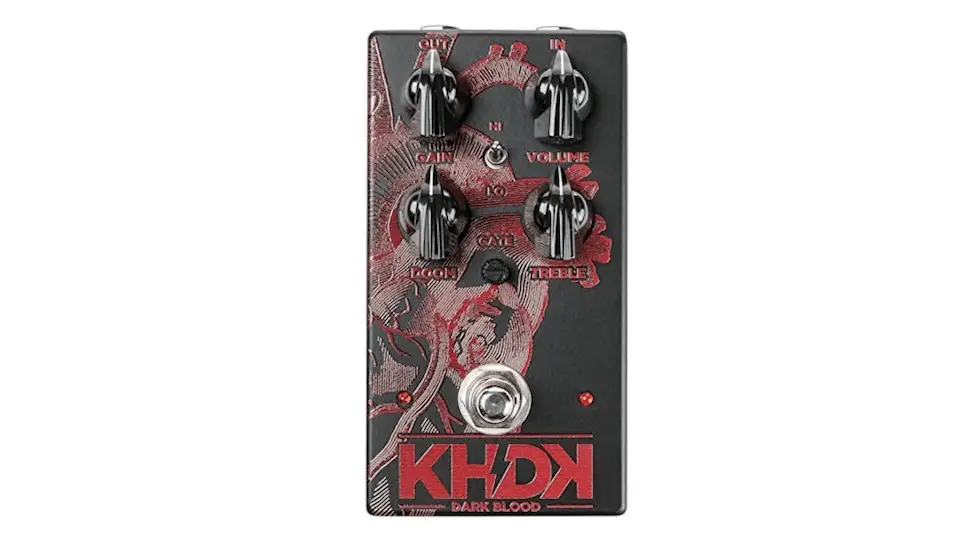
But if you’re into some really heavy stuff, then you can go with Kirk Hammett’s company KHDK and their Dark Blood pedal. This is a pretty compact and simple device that comes with basic controls, as well as some nice additions.
The “doom” control is a pre-distortion equalizer, and there’s also a simple treble booster on it. Along with that, we have a noise gate control as well as a toggle switch between high-end and low-end focused tones.
The pedal’s tone is sculpted through a very unique circuitry that combines solid-state and MOSFET technologies. The results are what you’d expect from a pedal branded under Metallica guitarist’s name.
Interestingly enough, Dark Blood is based on an obscure unnamed pedal that Kirk brought from Europe. It’s an expensive device, but it certainly does its trick for metal musicians of almost all subgenres.
What’s really exciting is that allows a lot of versatility while keeping things relatively simple and without any complicated principles in there. Metallica is one of the greatest metal bands, and this device just might be one of the best distortion pedals for metal.
